Dan Sinars was 15 when an elite school beckoned. He left home and,after shedding some tears, never looked back.
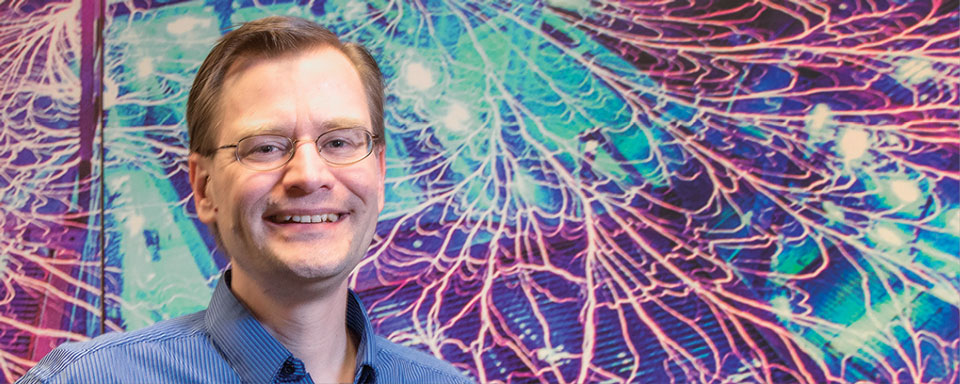
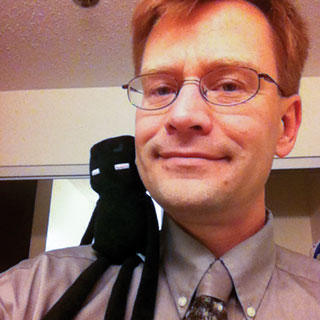
Dan Sinars’ science career began on an odd note when his junior high school wanted to place him in remedial education. His family had moved from Chicago to the suburbs, and admission papers listed him as having hearing loss. “Lots of people with hearing loss fall behind in school,” Sinars says. “But not everyone.”
Apparently not. Sinars is now senior manager at Sandia’s Z facility, which creates several times the entire world’s electrical power output in the nanoseconds when it fires.
Back then it took determined intervention by a gifted class teacher to rescue Sinars. She worked out a deal with the remedialists: The school put Sinars in gifted classes on a trial basis and watched him closely. Sinars didn’t realize he was getting unusual scrutiny but was happy after four weeks to be formally invited to the gifted program. Once ensconced, he had permission to take an SAT exam that qualified him to spend three high school years in the elite Illinois Math and Science Academy in Aurora, Illinois. “That’s what really launched me into science and engineering,” he says. “More than half of my teachers had Ph.D.’s.”
But while a teacher launched him into more complex courses and high SAT scores into a science high school, he realized after his parents dropped him off at IMSA that he overlooked something big. Students were expected to live in dormitories; travel home was permitted only on weekends.
“I met my roommate, my parents left and I thought I was fine,” Sinars says. “I called my mom that night to check in and the enormity of what I had done — leaving home at the age of 15 — overwhelmed me. I broke down completely. My mom said, ‘You can always come home, but this is a great opportunity.’ That was all I needed to hear, and I never looked back.”
He took numerous physics and chemistry classes and three years of German, combined with liberal arts courses he enjoyed for their mind-expanding content and because he would not have to take them again in college.
A prestigious offer from Cornell
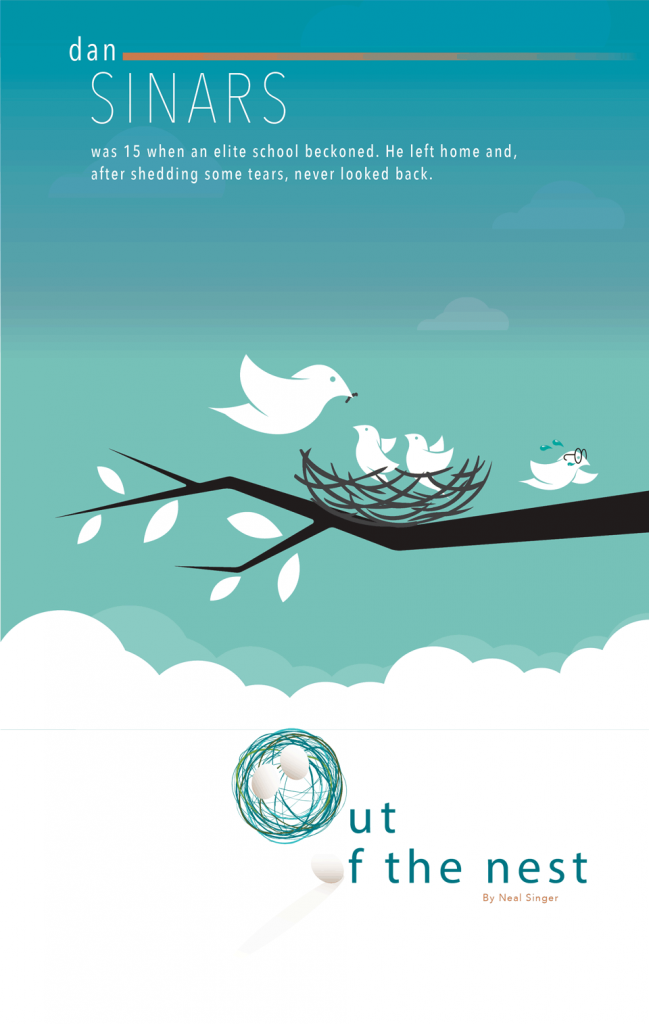
Still, Sinars wasn’t locked into a research career. “I wasn’t sure what I wanted to do,” he says. “I never gave it serious thought.”
An IMSA guidance counselor suggested that people with his interests often chose electrical engineering. The University of Oklahoma was among the schools he applied to. “They called me every other week, flew me out before the fall semester for a look-see and offered me a full ride.” They also had more National Merit Scholars than any other engineering school. So Sinars went.
There he met and married his wife, a chemistry student, and applied in physics to seven graduate schools “so we had a high probability of both getting into the same school.” One day a call came from the renowned Cornell physicist David Hammer. “He said he thought I’d make a wonderful addition to his research group, and that was enough for me,” Sinars says.
“I hope you see a trend here,” he says. “One thing leads to another. I follow the path of least resistance. I’ve succeeded by doing what people asked me to do.” Though, he adds, “there’s a lot of hard work involved.” The work involves extensive analysis before Sinars follows what he terms the path of least resistance.
“Cornell had CHESS (Cornell High Energy Synchrotron Source), great physics and particle physics, and my wife used X-ray sources from the synchrotron to study 3-D structures of proteins, so the school was appealing to us both,” he says.
He caught “the plasma fusion bug” from summer internships and didn’t want to do physics as a theorist, sitting in front of a computer. “I wanted to get my hands dirty.”
Since a number of his graduate projects were paid for by Sandia and a Department of Energy research grant, Sinars was open to working at the labs when several researchers gave him the hard sell about the Z machine.
Leadership in LDRD
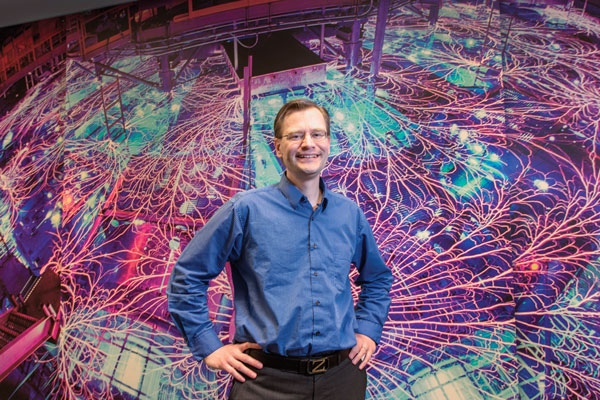
At Z, he says, “I’ve had a ton of Laboratory Directed Research and Development [LDRD] projects. In 2006, after being here only five years, I was principal investigator on a $5 million Grand Challenge LDRD project looking at advanced targets for Z, among other things. Later, LDRD gave me an opportunity to do a science project on SATURN, a sister facility to Z, to help balance my workload at the time. LDRD was the only means of getting funding for that project.
“I’ve had other awards — the DOE Early Career Award, and ARPA-E [Advanced Research Projects Agency-Energy] money — but that ’s all work for others. LDRD is so much nicer because Sandia researchers get to define what we think is important. The Grand Challenge LDRD is a great way, because of its size, to achieve cross-fertilization of ideas and learning. That’s what you want for young staff. And LDRD offers small leadership opportunities. The principal investigator is given an opportunity to lead, to influence the direction of themselves and others and make mistakes and learn from them.”
Sinars sees himself as an institution builder. “In physics, we build this edifice. Every one of us adds a brick or some mortar, or makes some other small contribution to this grand thing we call physics.”
Z-pinch
A z-pinch is a plasma cylinder with a large current running along its axis — the z-axis. The axial current generates its own magnetic field around the circumference of the cylinder. The axial current and its magnetic field result in a radially inward force directed toward the axis of the cylinder. If the current is large enough, the magnetic pressure can squeeze or “pinch” the plasma, much like a person crushes an empty soda can with a hand.
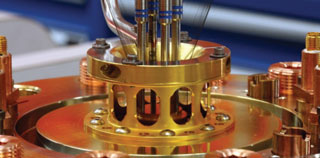
Z-pinches are used as radiation and fusion sources. In the 1950s, people tried to see if gas puffs made of fusion fuel could pinch hard enough to ignite. Since then, a wide variety of different pinches has been studied. Today the Z machine at Sandia Labs is being used to create the most powerful z-pinches in the world. It allows scientists to study materials under conditions similar to those produced by the detonation of a nuclear weapon and produces key data used to validate physics models in computer simulations.
Dan Sinars has long been fascinated by the pinching process. As a graduate student he tried to understand whether a Z-pinch plasma known as an X-pinch underwent a radiation-driven collapse to very high density due to such pinching. He subsequently created hot (millions of degrees), short-lived (tens of picoseconds), small (1 micron) plasmas.
Sinars has led two Laboratory Directed Research and Development projects on pinching. In one, Sandia’s SATURN pulsed power facility was used to demonstrate that much brighter, albeit bigger (5 micron), X-pinch plasmas could be created. The other two explored whether the implosion of cylindrical metal tubes, or liners, for inertial confinement fusion or dynamic materials research can be stably controlled.